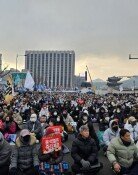The Existence of Vision Determines Fate
The Existence of Vision Determines Fate
Posted August. 11, 2004 21:49,
A question frequently asked by Korean visitors to the Asian Development Bank in Manila, Philippines is: The headquarters looks so similar to the Ministry of Culture and Tourism and the U.S. Embassy in Seoul. Whats the story behind it?
The two buildings in Seoul were built by Filipino engineers many decades ago, the ADB answered. Indeed, the Philippines was Asias second-richest country after Japan as late as the 1960s. It was far more advanced economically than Korea. Now, the Philippines has been demoted to a country which has little industrial base and which has to depend on money wired by its migrant workers overseas.
Vision for Future determines the Fate of the Country-
Per-capita GDP stood at $965 in the Philippines in 2002, little changed from $617 in 1980.
Middle Eastern countries, which once branched out on oil dollars, began to fall.
According to the IMF, there had been four Middle Eastern countries among the top 10 GDP countries, with the top three being Middle Eastern.
However, 22 years later, in 2002, Qatar is the sole Middle Eastern country among the 10. During this period, per-capita GDP in Saudi Arabia, the worlds largest oil producer, fell to $8,544 from $15,319.
Singapore and Ireland are in contrast to the oil producing countries. GDP in Singapore, where there are few natural resources, rose to $21,162 in 2002 from $4,904 in 1980. It is now in the rank of the top-class countries.
In Ireland, once Europes poorest nation, Prime Minster Sean Lemmas began to spearhead his economic initiative in the late 1950s when he took office. In the belief that the future is more important than the past, he sought reconciliation with the U.K. and made efforts into bringing in international investment. All these efforts paid off handsomely in 2002 when Ireland surpassed the U.K. with a per-capital GNP of $31,333.
Pundits hold the vision for the future as a major factor in determining the rise and fall of a country.
The Philippines fell to the bottom from the top after the long and corrupt rule of Marcos; Corazon, who managed to maintain the status quo; and Estrada, who dished out populist policies. On the contrary, Singapore soared to join the rank of top-class countries under the excellent leadership of Lee Kuan Yew, who offered a vision for the future.
The lack of a vision for the future and parochial minds characterize the countries that fall behind, said Kong Byung-ho, an economist who authored the best-selling Korea, A Decade After. For instance, as long as the zeitgeist of the Middle East remains looking in the past, inward looking and hostage to the slogan of overthrow US imperialism, the region will not rebound.
Corporations Should Prepare for the Future-
Dow Jones, a media conglomerate of the U.S., selects top companies for its flagship Dow Jones Industrial Index.
Among the first-generation public companies which made to the index in 1896, General Electric is the only company that remains in the indexs basket of 30 companies. The rest were de-listed. Many vanished. It shows the iron rule of the ecology of corporations: those who cannot read the future will fall behind.
Singer Co., the leading manufacturer of sewing machines, was a large corporation with a 47-story headquarters in New York. However, it could not stand the changes of time epitomized by the emergence of ready-made wear. It filed for bankruptcy in 1999, ending its 150-year history.
What the Success of BoA Teaches Us-
Lee Soo-man, a singer-turned entrepreneur who has a large share in SM Entertainment, detected BoAs value for the future as soon as he first saw her in 1998 when she tagged along with her brother who auditioned with Lee for a singer. She was just a fifth-grader. BoA has since been trained in singing and dancing for two years. In Japan, he studied Japanese from a TV show moderator. BoA has grown into a one-person corporation with annual sales of 100 billion won.
It is important to have prospects for the future with the flow of time in the entertainment industry, said Lim Jin-mo, a pop music commentator. The importance of the vision for the future carries the same weight with individuals, corporations, and the country.
Headline News
- Joint investigation headquarters asks Yoon to appear at the investigation office
- KDIC colonel: Cable ties and hoods to control NEC staff were prepared
- Results of real estate development diverged by accessibility to Gangnam
- New budget proposal reflecting Trump’s demand rejected
- Son Heung-min scores winning corner kick







